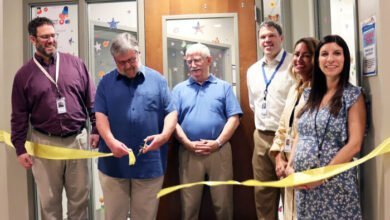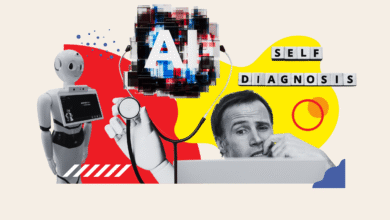How a hidden brain circuit fuels fibromyalgia, migraines, and PTSD

Ache is not only a bodily feeling – it additionally carries emotional weight. This misery, anguish and nervousness can remodel into lengthy -term struggling.
Researchers on the Salik Institute now have a mind circle that offers bodily ache its emotional accent, revealing a brand new potential goal for treating continual and emotional ache situations reminiscent of Fibromyalgia, migraines, and submit -traumatic dysfunction (submit -trauma dysfunction).
Posted on July 9, 2025, in The details of the Nationwide Academy of SciencesThe examine determines a gaggle of neurons in a central mind area known as the mulch, which appears to be medium in emotion or passionate The aspect of the mice. This new path challenges the understanding of the textbooks of tips on how to deal with ache within the mind and physique.
“For many years, the prevailing opinion was that the mind addresses the sensory and emotional points of ache via separate paths,” says the creator of the chief authors, Music Han, assistant professor and head of the main improvement division in Salik. “However there was a dialogue about whether or not the sensory ache path might also contribute to the emotional aspect of the ache. Our examine offers sturdy proof that the sensory ache path department is instantly mediates within the emotional expertise of ache.”
The bodily feeling of ache is what lets you uncover it instantly, consider its depth and decide its supply. The emotional a part of the ache is what makes it disagreeable. This emotional discomfort motivates you to take motion and helps you be taught to hyperlink unfavorable emotions to the state of affairs so to keep away from this sooner or later.
It is a essential discrimination. Most individuals start to understand the ache in the identical depth of stimulation, which signifies that all of us deal with the sensory aspect of the ache considerably comparable. By comparability, our potential to Tolerate The ache may be very totally different. The quantity we undergo from or really feel threatened by ache is set by our emotional remedy, and if this turns into very delicate or very lengthy, this will result in ache dysfunction. This makes it necessary to grasp which elements of the mind management these totally different dimensions of ache.
It was believed that the sensory ache wherein the spiny system mediates, a path that sends ache indicators from the spinal twine to the mulch, which transports it to the sensory processing areas throughout the mind.
It was usually believed that the emotional ache wherein the second path is known as the Spinobarabrarite gadget, which sends ache info from the spinal twine to the mind trunk.
Nevertheless, earlier research that use older analysis strategies have advised that the ache circle could also be extra difficult. This lengthy -term dialogue impressed Han and his crew to rethink the query utilizing fashionable analysis instruments.
Utilizing superior strategies to deal with particular mind cells, researchers have found a brand new spinothalamic in mice. On this circle, ache indicators from the spinal twine are despatched to a unique a part of the mulch, which has tonsils, the emotional remedy heart of the mind. This particular group of neurons could be recognized within the mulch by expressing CGRP (peptide related to calcitonin), which is a neuropathy that was initially found at Professor Ronald Evans Laboratory in Salik.
When the researchers (genetically silence) these neurons have been “cgrp, the mice nonetheless work together with gentle ache stimuli, reminiscent of warmth or strain, indicating that their sensory remedy was sound. Nevertheless, they don’t appear to have everlasting unfavorable emotions in these conditions, and so they have failed to indicate any worry habits or keep away from benefiting in future experiences. Then again, when these nerve cells themselves have been turned on (activated (optical activation), mice confirmed clear indicators of misery and realized to keep away from that space, even when no ache stimuli was used.
The primary creator Suki Kang, the primary researcher at Han Laboratory. “Understanding biology behind these two distinct processes will assist us discover therapies for ache varieties that don’t reply to conventional medicine.”
Many instances of continual ache – reminiscent of fibromyalgia and migraines – embrace lengthy, intense and unsightly experiences of ache, usually and not using a clear supply or bodily harm. Some sufferers additionally report extreme sensitivity to common stimuli reminiscent of mild, sound or contact, which others won’t think about painful.
Han says that the extreme stimulation of the CGRP spiny path might contribute to those circumstances by making the mind misuse or exaggerating its response to the sensory inputs. The truth is, CGRP is the half -genes related to migraines and different ache issues.
It’s price noting that many CGRP blockers are already used to deal with migraines. This examine might assist clarify the rationale for the work of those drugs and may encourage new non -anti -emotional issues.
Han additionally sees potential significance of psychological situations that contain the notion of the growing risk, reminiscent of PTSD. The growing proof of his laboratory signifies that the CGRP path is as a part of the broader warning system, discovers and never solely responds to ache however a variety of disagreeable sensations. Calling this path with CGRP blockers can present a brand new strategy to relieving worry, avoiding and hyperactivity in shock -related issues.
Extra importantly, the connection between the CGRP path and psychological ache related to social experiments reminiscent of unhappiness, loneliness and sorrow are nonetheless unclear and require extra examine.
“Our discovery of the course of emotional ache CGRP offers us a partial rationalization and the circle degree of the distinction between discovery Bodily ache and struggling “We’re excited to proceed to discover this path and allow future therapies that may scale back this struggling,” says Han.
Among the many different authors are Shigia Liu, Jong Hyun Kim, Dong El Kim, Tae Giu, Johaang Ping, Mao Yi, Co-Van Lee, Ronald M. Evans, Martin Golding from Salik.
Work was supported by the Nationwide Psychological Well being Institutes (1R01MH116203) and SIMONS (Bridge to Independence Sfari #388708).
2025-07-11 03:37:00





